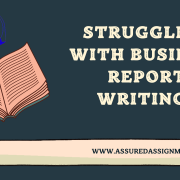Learning Outcomes
LO1 Understand and evaluate the organizational factors impacting on and contributing to the effective design and implementation of strategic organisational change programmes (knowledge and understanding).
LO2 Demonstrate a systematic understanding and critical evaluation of the key aspects of the strategic management process though a comparative analysis of different models and perspectives and their impact on executive decisions (analysis, application, knowledge and understanding).
LO3 Analyse and critically evaluate the environments in which strategic management and change takes place and assessing the appropriate organisational responses (analysis, enquiry).
LO4 Explore and evaluate critically the contemporary literature on strategic leadership, management and decision-making and how it relates to successful organisation progression in a global environment (knowledge and understanding).
LO5 Understand, critically evaluate and apply contemporary ideas on strategic aspects of decision-making in effective risk assessment during organisational change (integration, knowledge and understanding).
LO6 Understand, critically evaluate and apply competing frameworks to management thinking and strategic decisions (analysis, knowledge & understanding).
LO7 Create and justify a critically informed approach to the resolution of a strategic organisational change problem (application, communication, enquiry, integration, learning, reflection)
Assignment Instructions
Each student should hand in one electronic copy of a complete set of FOUR portfolio responses by the time and date above to the appropriate ‘hand-in location’. Assignments must be submitted by the due date. The only circumstance in which assignments can be submitted late is if an extenuating circumstances form is submitted at the same time.
The Portfolios contribute to 50% of total marks on this module. All portfolios are equally weighted at 25 marks each; for Portfolio Assignment (50% of module’s mark) you need to choose a total of 4 portfolios out of 8 portfolios.
Note 1: Students are expected to select THREE portfolios from Part 1 and ONE portfolio
from Part 2.
Note 2: Please select Portfolio Option 5 OR Portfolio Option 6, but NOT BOTH, as part of your three selected options in Part 1.
Answers to the Portfolio questions must be brief and in a concise executive summary format which demonstrates your critical understanding on the topics selected.
Answers should be referenced in terms of both supporting sources of contextual evidence/argument and to the related literature in terms of underpinning theory and concepts.
Portfolio word limits is 750 words/per portfolio plus three pages of appendices to support your arguments.
The font type must be either Arial or Times New Roman with a size 12 font and with 1 inch (2.5 cm) margins at the sides with 1.5-line spacing.
In addition, you should include a separate front sheet by way of a list of the portfolios you have chosen and you must also include a combined reference section at the end.
All sources must be clearly referenced using the Harvard Referencing System (HRS).
Please make sure that you clearly signpost and answer EACH question in the 4 portfolio options you select, complete and submit by the DUE DATE AND TIME.
PLEASE NOTE: The guidance in this document is offered ONLY as a starting point for thinking about how to answer questions for each portfolio option. YOU also need to put together and submit responses which demonstrate engagement with the assignment’s level 6 learning outcomes and marking criteria.
Part 1 – Choose THREE portfolios from options 1 – 6 in Part 1. Tests LO
1, 2 and 3. (Note: Please select Portfolio Option 5 or Portfolio Option 6,
but NOT BOTH, as part of your three selected options).
Portfolio Option 1. Prepare a learning portfolio of approximately 750 words based upon the case of ‘Marks and Spencer Plc’ for which the tasks are:
Critically analyse why Marks and Spencer’s fortunes changed as quickly as they did in 1999. How would this change be explained by applying Thompson’s EVR model?
How might such a decline have been avoided in the first place?
What are the key factors which contributed to M&S’s recovery and do you feel that this recovery will be sustained in the future?
Points to consider when answering questions for OPTION 1:
Apply the EVR model to the case. You will need to justify your answer and to use in-text citations which clearly comply with the Harvard Referencing System.
A well-researched summary SWOT (analysis of ever changing external factors and drivers and also company strengths and weaknesses) would be useful to support
EVR application and analysis. Perhaps the SWOT should be placed in the Appendix?
Consider which permutations of non EVR congruency best explain developing
and/or changing situations – critical evaluation – what are any limitations of this model as applied to this case context?
Relate to Chapter 13 of Strategic Management: Awareness and Change (2014.p453) Thompson, Scott and Martin – on Failure, Consolidation and Recovery Strategies. See Recovery Strategies – after Slatter (1984) and others on p. 463/4. Was turnaround / recovery realised under Stuart Rose as CEO?
Analyse key contributors to M&S recovery (consider factors like greater focus on customers, continual product innovation etc.).
Do further industry/case research – for example search for (interactive) historical timelines about the company’s history and strategies over time.
General notes – develop answers by engaging with key concepts in a cited and referenced manner and likewise all sources of case evidence.
Have you made effective use of appendices?
Check answers against learning outcomes.
Portfolio Option 2. Prepare a learning portfolio of approximately 750 words based upon the case of ‘No-Frills Retailing – the Aldi and Lidl business models’ for which the tasks are:
Compare and contrast the two business models of Aldi and Lidl. Is there an argument that one is stronger than the other or are they simply ‘different’? Justify your argument.
What are the sources of competitive advantage of each company and are they sustainable?
Points to consider when answering questions for OPTION 2:
A business model addresses what a company does (its products and services), who its target customers are, and what their compelling reason to buy is. Consider what is at the heart of both business models (e.g. good quality at low prices). The most obvious reasons are stated in the case, however avoid just restating information from the case as this will be seen as too descriptive.
You are required to compare and contrast the two business models.
What are the relevant cost drivers for Aldi and Lidl as they chase costs below the larger supermarkets? Could use of a Value Chain model be of help to your efforts here? Critically analyse whether value can be destroyed by being too aggressive with cost reductions.
General notes – develop answers by engaging with key concepts in a cited/referenced way and likewise properly cite all sources of case evidence. Have you made effective use of appendices and cited to same?
Correct application / use of Harvard Referencing System is required.
Check answers against learning outcomes.
Portfolios Option 3. Prepare a learning portfolio of approximately 750 words based upon the case of ‘London Zoo’ for which tasks are:
Carry out stakeholder mapping on London Zoo and clearly identify what are the key stakeholders and how powerful are they at the time of the case? Could less powerful but interested stakeholders be repositioned and what might these stakeholders expect from the organisation? Briefly identify what conflicts might arise between the respective objectives of these stakeholders?
What strategy would you recommend to London Zoo?
Points to consider when answering questions for OPTION 3:
A critical discussion and application of stakeholder mapping and its implication for strategy, including the discussion of possible conflicts that may arise between the different stakeholder groups. What stakeholder mapping technique would you use and why?
Recommendation of strategy (linked to corporate objectives, strategy vision, etc.).
You are required to do further industry/case research to answer this question.
Relate to Chapter 3 of Strategic Management: Awareness and Change (2014).
Portfolios Option 4. Prepare a learning portfolio of approximately 750 words based upon the case of ‘IKEA’ for which the tasks are:
Critical application of Cultural Web model to IKEA. Research along with use of citations and referencing are all required.
A critical discussion of the impact of organisational culture on the success of competitive strategy at IKEA.
Critical analysis and evaluation of negative aspects of culture on contemporary firms (e.g. Path Dependency/Lock in etc.).
Relate to Chapter 7 of Strategic Management: Awareness and Change (2014).
Refer to Barney (1980) article on Culture and SCA (see Blackboard).
Apply a cultural web model to IKEA and critically analyse how success of the organisation can be explained by different manifestations of culture in the model.
Critically analyse the relationship between organisational culture at IKEA and success of its competitive strategy.
Points to consider when answering questions for OPTION 4:
Note: Please select Portfolio Option 5 OR Portfolio Option 6, but NOT BOTH, as part of your three selected options in Part 1.
Portfolio Option 5. Prepare a learning portfolio of approximately 750 based upon the case of ‘The English Premier League in 2010’ for which tasks are:
Apply Porter’s Five Forces model to the English Premier League.
From your analysis would you conclude that this is an attractive or unattractive, business to be in?
Evaluate limitations of this model as applied to this context?
Portfolio Option 6. Prepare a learning portfolio of approximately 750 based upon the case of ‘Beauty is Big Business for Britain’ for which the tasks are:
Apply Porter’s Five Forces model to the UK Beauty Industry.
From your analysis would you conclude that this is an attractive or unattractive, business to be in?
Evaluate limitations from your use of this model as applied to this context?
Points to consider when answering questions for OPTION 5 OR OPTION 6:
You are required to APPLY Porter’s Five Forces Model to analyse EITHER the English Football Industry OR UK’s Beauty Industry. Please DO NOT include both options 5
and 6 as part of your responses to the selected options in the assessment.
Your analysis should conclude whether the industry is attractive or not for new entrants. You are also required to critically analyse limitations of the 5 Forces model as applied to option 5 or 6.
See paper by Porter (2008) – The Five Competitive Forces That Shape Strategy – On
Blackboard under week 3. Also carry out and use additional research in your analysis.
From your analysis would you conclude that this is an attractive or unattractive, business to be in?
What are the limitations of this model as applied to this context? Adaptations of model?
Are the Five Forces in this industry equal in terms of influence? Can players in the industry exert forces of their own – e.g. can they use influence of say their powerful buyers to put pressure on potentially powerful suppliers – (or not) in this case? Are there any data limitations perhaps attributed to the 5 Forces Model being static in nature? (see Porter (2008) and analyse the nature and scope of the model).
General notes – develop answers by engaging with key concepts in a cited and referenced way and likewise sources of case evidence. Have you made effective use of appendices and cited to same?
Check answers against Learning outcomes.
Part 2 – Choose ONE portfolio from Options 7 and 8 in PART 2. Tests LO4
Portfolio Option 7. Prepare a learning portfolio of approximately 750 words based upon the case of ‘James Dyson’ for which the tasks are:
Apply the concepts of core competency and strategic capability, what is the ‘secret’ of James Dyson’s competitive advantage?
Critically discuss the role of leadership and analyse what is the relationship of size and growth of organisations to the style of leadership at Dyson
Points to consider when answering questions for OPTION 7:
Carry out an analysis of core competency and strategic capability of Dyson (consider core resources and competencies)?
How does James Dyson sustain the competitive advantage of his business? Relate the success of the company to personal characteristics of James Dyson. How crucial is Sir James Dyson for the business? What is the secret of James Dyson’s competitive advantage?
Refer to key concepts and papers such as Barney (1991) Firm resources and sustained competitive advantage paper uploaded on week 4 on Blackboard.
Also, critically review and use Hamel and Prahalad (1990) The Core Competence of the Organisation – HBR (available on Blackboard week 4).
Students could apply competences / resources matrix – threshold resources / threshold competences vs. unique resources and core competences to delineate / frame these for Dyson – which core competences could change and/or erode over time to become a threshold competence?
General notes – develop answers by engaging with key concepts in a cited/referenced way and likewise sources of case evidence.
Portfolio Option 8. Prepare a learning portfolio of approximately 750 words based upon the case of Inside Dyson’: a distinctive company?’ for which the tasks are:
Briefly describe how the internal and external value linkages at Dyson have been developed in order to gain leverage and extend their strategic capability – relate your answer to appropriate strategic concepts.
Outline the key characteristics of the strategic leadership style of Dyson and consider any possible succession management issues should Dyson retire.
Assuming that their leadership and other competences can be imitated by competitors, briefly outline how Dyson can develop strategies to further protect their competitive positioning?
Points to consider when answering questions for OPTION 8:
Analyse the strategic capabilities of Dyson by applying the competencies framework (consider threshold resources and competencies and core resources and competencies).
You can carry out Activity Mapping or Value Chain analysis to analyse how capabilities are developed, employed and managed at Dyson and also consider internal and network (value system linkages) as appropriate. For example, discuss links between say secondary activities such as technology development and a primary activity such as operations.
Critically discuss the issue of imitability of Dyson’s core competencies (use the VRIN criteria). How crucial is Sir James Dyson for the business and how difficult it is for competitors to imitate Dyson’s strategic capability?
What response would you give to part C of the questions and why? Your response must demonstrate critical understanding of the case, Dyson’s role in the company, the place of the company in the industry to ascertain how to protect competitive positioning, etc.
General notes – develop answers by engaging with key concepts in a cited/referenced way and likewise all sources of case evidence. Have you made effective use of Harvard Referencing System?
Have you used the allocated appendix space and properly cited all discussion placed in your appendix?
Check answers against learning outcomes.











